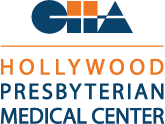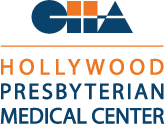|
Technology is helping ophthalmologists diagnose and treat a range of different conditions, from diabetic retinopathy to glaucoma. One technology that shows promise for both diagnosing and monitoring glaucoma is optical coherence tomographic angiography (OCTA). This imaging technique provides a visualization of blood flow within the retina to give a clearer picture of the effects of glaucoma on ganglion cells. The destruction of these cells leads to permanent blindness. Accurate Visualizing of Blood VesselsUsing OCTA, clinicians can visualize blood vessels in the eye to the capillary level. The technology employs software that compares cross-sectional images taken at the same position and looks for signal fluctuations that indicate the flow of blood. Developers have created an algorithm that can accurately identify capillaries using only two frames. However, these images undergo significant post-processing manipulation with bulk motion subtraction algorithms that can remove artifacts caused by eye motion, including ocular pulsation, ocular drift and saccades. Measurements of blood flow are exceptionally useful in evaluating glaucomatous damage. The correlation between blood flow and glaucomatous damage has been documented for decades. In fluorescein angiography, the presence of delayed vascular filling and reduced overall fluorescence can indicate glaucomatous damage. However, fluorescein angiography is invasive and only minimally quantitative, which makes it less practical for clinical use. Researchers have attempted to use other imaging technologies, such as Doppler ultrasound, Doppler flowmetry and laser speckle flowgraphy to measure blood flow, but high measurement variability can prevent their use in practice. While these techniques can detect differences between groups in a research study, their diagnostic potential is limited. Value of OCTA for Diagnosis and TrackingOCTA stands out as an exemplary choice for several reasons. The technique is noninvasive and demonstrates high repeatability and reproducibility. Each scan takes only a few seconds, making it easy to use in a clinical setting for diagnosing glaucoma and tracking glaucomatous changes in patients who have already been diagnosed. The measurements are so precise that even small changes in disease progression can be tracked. Researchers first used OCTA in 2014 to study altered blood flow in patients with glaucoma. In that study, published in the July 2014 journal Ophthalmology, researchers found that patients with glaucoma had reduced capillary density and a lower flow index at the superficial depth of disc tissue. Furthermore, the researchers found blood flow was reduced at the lamina cribrosa, the optic nerve head. However, the researchers found the lamina cribrosa had too much neural tissue shadowing and too much variability in anatomy to serve as an effective glaucoma screening site. Subsequent studies published in JAMA Ophthalmology (2015) and Ophthalmology (2017) looked at the peripapillary retina and macula, where the retinal vessel density allowed for high diagnostic accuracy. OCTA’s Ability to Identify Early Signs of GlaucomaThe real value of OCTA is its ability to detect early glaucoma better than other imaging techniques. OCTA has the sensitivity to detect not just dead ganglion cells, but also those damaged by the disease. In the earliest stages of glaucoma, dysfunctional ganglion cells may have lower metabolism leading to reduced capillary density, which is detectable by OCTA. Perhaps for this reason, the technique can detect glaucoma earlier than other diagnostic tools, which allows clinicians to intervene earlier in the disease process. OCTA is also valuable as a diagnostic tool because it visualizes blood vessel density; it does not directly measure the rate of blood flow. (An algorithm is used to calculate the flow rate based on the OCTA scans.) Reproducibility of flow rate measurements has been poor because of variations in a patient’s physiologic state. For example, visual stimulation and blood oxygen concentration can change blood flow in vessels in the eye. In contrast, vessel density measurements are reproducible using OCTA and correlate well with the severity of glaucoma changes. Potential Use of OCTA to Measure Visual FieldsAnother benefit of OCTA is its ability to simulate visual field results. Many patients are not able to reliably complete visual field tests to assess vision loss and many more people simply dislike taking the test. Preliminary research on reconstructed visual fields using the results of peripapillary OCTA scans shows acceptable correlation between the predictions and actual results in early and moderate forms of glaucoma. It's worth noting that simulated visual fields have more reproducibility and thus diagnostic accuracy than visual field tests. However, this use of OCTA has not yet been approved by the FDA, nor is it commercially available, but it could be used clinically in the future if enough longitudinal data is collected. Visual field studies are not only inconvenient for many patients, but they can also lead to unnecessary surgery or delayed treatment due to inconsistencies between tests. Because the visual field test is insensitive, patients may lose a portion of their vision before test results indicate that treatment should be increased. A more objective method for monitoring visual field changes could help improve glaucoma treatment and preserve vision. |
 РУССКИЙ
РУССКИЙ  ENGLISH
ENGLISH 


